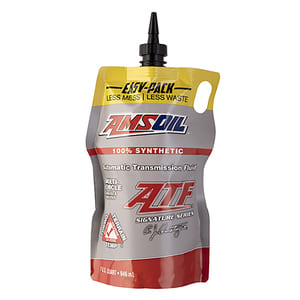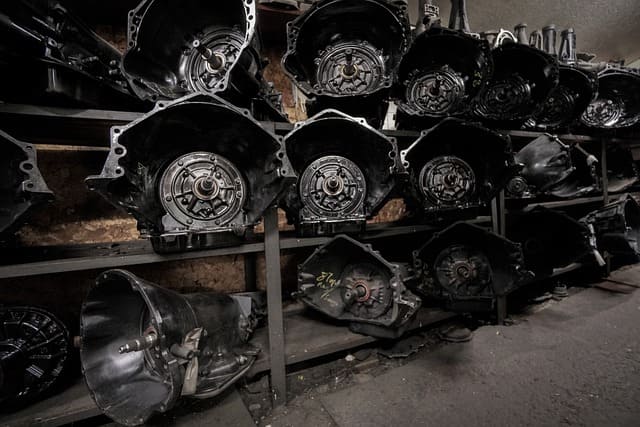Ever wondered how your car smoothly transitions from a stop to cruising down the highway? The unsung hero behind this seamless experience is the torque converter. A torque converter transfers power from the engine to the transmission and wheels in an automatic vehicle. But how does a torque converter work in an automatic transmission?
At its core, a torque converter multiplies engine torque, enabling smooth acceleration and allowing the engine to run even when the vehicle is stationary. When the car idles, the torque converter stalls, keeping it at a standstill. During acceleration, it multiplies torque to move the vehicle. As speeds increase, the converter transitions to a direct power transfer, sometimes with a lockup feature for enhanced fuel efficiency.
Understanding the key components—like the front cover, clutch, turbine, stator, and impeller—reveals how fluid dynamics within the converter ensure effective power transmission and heat management. This intricate process of fluid direction changes generates heat, necessitating high-quality fluid to maintain performance and longevity.
In essence, the torque converter is vital for smooth power transfer in vehicles with automatic transmissions. Grasping its components and fluid dynamics is crucial for optimal vehicle performance.

Understanding the Torque Converter
If you’ve ever wondered about the magic behind smooth acceleration in an automatic car, it all comes down to the torque converter. Simply put, a torque converter is the key player that transfers power from the engine to the transmission and wheels. Let’s break down how this fascinating component works and why it’s so crucial for automatic transmissions.
Role of a Torque Converter
The torque converter’s main job is to multiply engine torque, which helps in smooth acceleration and also lets the engine keep running even when the vehicle is stationary. This means that your car can stay in gear and at idle without stalling.
Torque Multiplication Process
Understanding the steps in the torque multiplication process is essential:
Stalling and Initial Acceleration
At idle: The torque converter stalls, keeping the car stationary.
Upon acceleration: It multiplies torque, helping the vehicle move from a standstill.
Coupling Phase
At higher speeds: It provides a direct power transfer. Some have a lockup feature for better power transfer and fuel efficiency.
Key Components
Knowing the parts inside the torque converter will help you understand its function better. Here are the essential components:
Front Cover
Spins at the same speed as the engine and acts as the outer shell of the torque converter.
Clutch
Engages for direct drive when cruising, promoting fuel economy.
Turbine
Connects to the transmission and directs fluid to multiply torque.
Stator
Redirects fluid flow, boosting torque multiplication.
Impeller
Drives fluid for power transfer and torque multiplication.

Fluid Dynamics and Heat Management
Fluid inside the torque converter not only transfers power but also helps manage heat from internal friction.
Heat Generation
Rapid fluid movement generates heat. Low-quality fluid can oxidize and form deposits, reducing performance.
Fluid Maintenance
Using high-quality fluid is crucial for protecting the torque converter and ensuring long-term efficiency.
In essence, the torque converter is a remarkable component that enables smooth power transfer in an automatic transmission. Its ability to manage both power and heat is vital for maintaining optimal vehicle performance.
Role of a Torque Converter in Power Transfer
A torque converter transfers power from the engine to the transmission and wheels in an automatic vehicle. It multiplies engine torque, enabling smooth acceleration and letting the engine run while the vehicle is stationary. Let’s explore how this essential component functions in different stages of power transfer.
Torque Multiplication Process
The torque multiplication process in a torque converter occurs during three main phases: stalling, initial acceleration, and the coupling phase. These phases ensure that power transfer from the engine to the transmission is efficient and smooth.
Stalling: At idle, the torque converter “stalls,” which means it keeps the vehicle stationary while the engine is still running.
Initial Acceleration: As the vehicle starts moving from a standstill, the torque converter multiplies the engine torque to provide the necessary power to the wheels.
Coupling Phase: At higher speeds, the torque converter transitions to a coupling phase where it provides a more direct transfer of power from the engine to the transmission.

Stalling and Initial Acceleration
During stalling and initial acceleration, the torque converter plays a crucial role in managing the power transfer when the vehicle is at a standstill and begins to move.
Stalling at Idle: When the vehicle is idle, the torque converter allows the engine to run without moving the car. This is achieved by the impeller inside the converter spinning and moving fluid without engaging the turbine.
Initial Acceleration: When you press the gas pedal, the engine speed increases, and the torque converter multiplies this torque to start moving the vehicle. This process allows for a smooth and powerful initial acceleration, essential for driving from a stationary position.
Coupling Phase
The coupling phase is critical for maintaining efficiency and performance at higher speeds.
Power Transfer at Higher Speeds: In this phase, the torque converter provides a direct transfer of power from the engine to the transmission, reducing slippage and improving efficiency.
Lockup Features: Many modern torque converters include a lockup clutch feature. This feature locks the converter at certain speeds, providing a direct mechanical connection to enhance fuel efficiency and reduce heat generation.
Understanding these stages helps in answering the question: “How does a torque converter work in an automatic transmission?” It’s clear that the torque converter is instrumental in ensuring smooth power transfer, efficient acceleration, and optimal vehicle performance at various speeds.
Key Components of a Torque Converter
Understanding how a torque converter works in an automatic transmission is crucial for any car enthusiast. A torque converter transfers power from the engine to the transmission and wheels, enabling smooth acceleration and efficient power transfer. Let’s discuss the key components that make this possible.

Front Cover
The front cover of a torque converter acts as its outer shell. This part spins at engine speed and serves as a protective cover for the internal components. The front cover is vital because it houses the other parts and connects the converter to the engine’s crankshaft. Think of it as the sturdy backpack that carries and safeguards all your essential items on a hike.
Clutch
The clutch plays a significant role in ensuring direct drive at cruising speeds. When you’re driving at a steady pace on the highway, the clutch engages to provide a direct connection between the engine and the transmission. This engagement helps improve fuel efficiency and reduce slippage. It’s like switching from pedaling your bike uphill to coasting down a gentle slope—effortless and efficient.
Turbine
The turbine is crucial in directing fluid flow within the torque converter. It connects directly to the transmission and is responsible for transferring the engine’s torque to the transmission. Fluid from the impeller enters the turbine, causing it to spin and thus transmitting power to the transmission. Imagine it as the paddles of a waterwheel, capturing the flow of water to generate movement.
Stator
The stator is the unsung hero of torque multiplication. Positioned between the impeller and turbine, the stator redirects fluid flow to enhance torque multiplication. It ensures that the fluid exits the turbine in an optimal direction before returning to the impeller. This redirection boosts torque during acceleration, providing the extra power needed to get the vehicle moving from a standstill. Think of the stator as a skilled basketball player, perfectly passing the ball to set up a slam dunk.
Impeller
Finally, the impeller drives fluid for power transmission and torque multiplication. It is connected to the engine and spins at engine speed, pumping transmission fluid into the turbine. The action of the impeller is crucial for the initial torque conversion phase, much like a fan that directs air to cool down a room. Without the impeller’s initial drive, the whole system wouldn’t work.
Understanding these key components helps answer the question, “How does a torque converter work in an automatic transmission?” Each part plays a significant role in ensuring smooth power transfer, efficient driving, and optimum vehicle performance.

Fluid Dynamics and Heat Management
Fluid dynamics and heat management are crucial for the performance of a torque converter in an automatic transmission. The movement of fluid inside the torque converter not only transfers power but also manages the heat generated by the internal components. Let’s explore these aspects in detail.
Heat Generation
Rapid changes in fluid direction within the torque converter generate significant amounts of heat. As the fluid moves quickly and changes direction to transmit power from the engine to the transmission, friction occurs, and heat is produced. This heat must be managed to prevent damage to the torque converter and the transmission.
Poor-quality fluid can exacerbate this problem. Inferior fluids may break down under high temperatures, leading to oxidation and the formation of deposits. These deposits can clog the internal passages, reducing the efficiency of power transfer and causing overheating.
Why does this happen?
Imagine running in circles at top speed; your body heats up quickly. Similarly, the fluid inside the torque converter heats up due to constant motion and friction. Poor-quality fluid is like running in heavy clothes – it doesn’t allow efficient cooling, leading to quicker and more severe overheating.

Fluid Maintenance
Maintaining high-quality fluid is essential to protect the torque converter and enhance its longevity. One such high-quality fluid is AMSOIL Signature Series Fuel-Efficient 100% Synthetic Automatic Transmission Fluid (ATF).
Let’s dive into the features and benefits of this synthetic ATF:
Heat Resistance: This fluid is formulated with high concentrations of antioxidants, which make it naturally resistant to heat breakdown. It protects against thermal and oxidative degradation.
Fluidity in Extreme Conditions: Unlike conventional fluids, AMSOIL Signature Series remains fluid in sub-zero temperatures. This means it provides consistent protection and performance, even in harsh climates.
Extended Lifespan: The advanced formulation of this synthetic fluid helps combat sludge and varnish formation. This keeps the torque converter and transmission cleaner, ensuring they function optimally for a longer time.
Efficiency: By maintaining proper viscosity, this fluid reduces friction within the torque converter. This enables smoother power transfer, enhancing both vehicle performance and fuel economy.
Consider your transmission fluid like the blood in your veins. If it’s clean and efficient, your body (or in this case, vehicle) performs at its best. High-quality synthetic fluids like AMSOIL’s not only protect but also improve overall efficiency.
By using and maintaining high-quality transmission fluid, you ensure the longevity and efficiency of your torque converter, helping you avoid costly repairs and keeping your vehicle running smoothly.
Understanding the importance of fluid dynamics and heat management in a torque converter is crucial for any car enthusiast. The right fluid can make a significant difference in performance and longevity, protecting your vehicle from the inside out.
Conclusion
A torque converter is crucial for smooth power transfer in an automatic transmission. It allows the engine to transfer power effectively to the transmission and wheels, ensuring both acceleration and idle stability. Understanding its components and the role of fluid dynamics is essential for maintaining optimal vehicle performance. Knowledge of how a torque converter works in an automatic transmission helps in appreciating the importance of high-quality fluid for longevity and efficiency. Proper maintenance and awareness of heat management can make all the difference in vehicle performance.
For more details on AMSOIL synthetic ATF fluids and other synthetic oils, go to bestengineoilintheworld.com.

